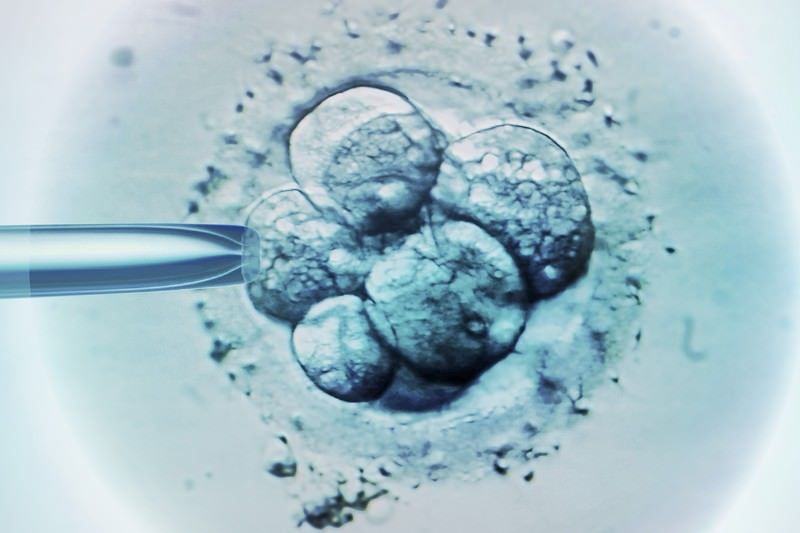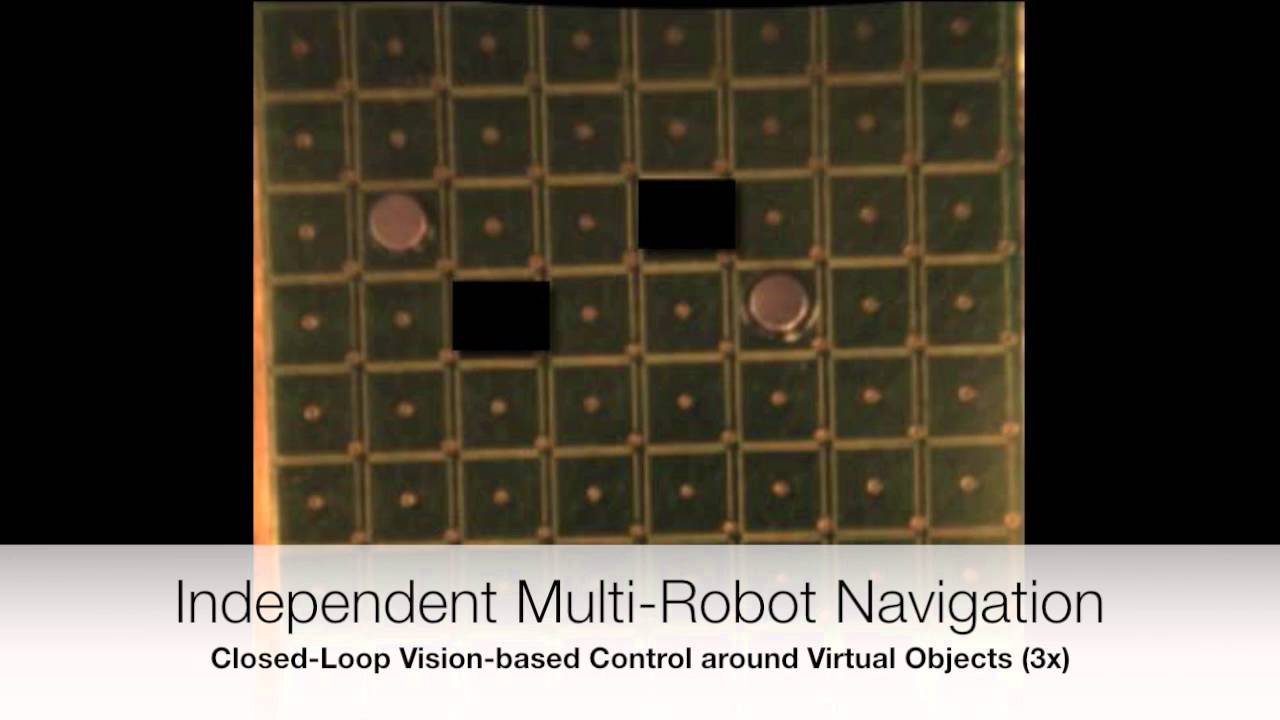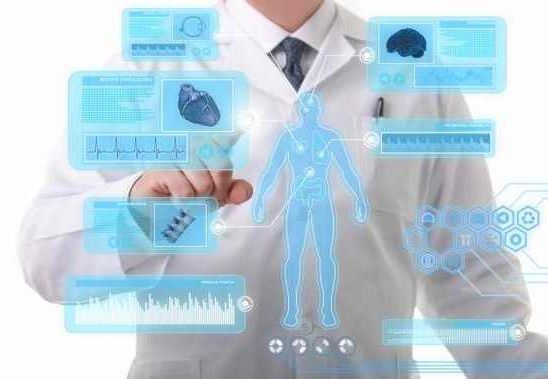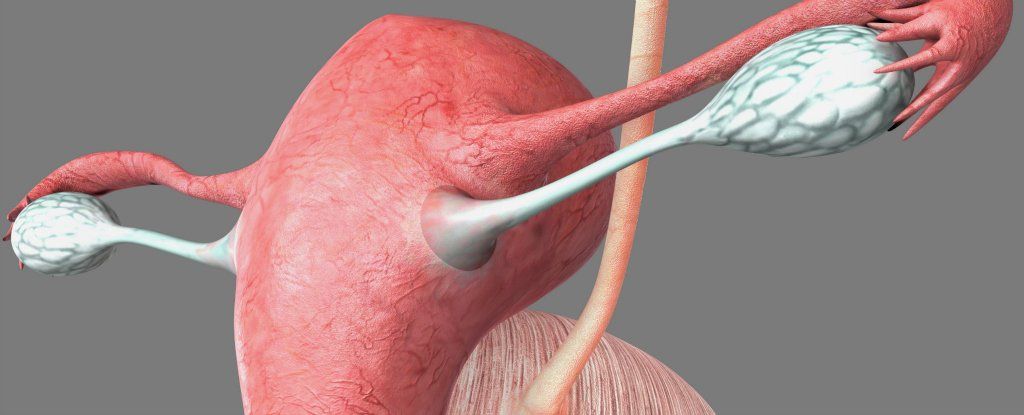With a decision imminent on permitting UK gene-editing research using human embryos, New Scientist explains the potential pay-off and limitations of the work.
Interesting and could change as well as acellerate our efforts around bot technology and humans as well as other areas of robotic technology.
Like Jedi Knights, researchers at Purdue University are using the force — force fields, that is. (Photo : Windell Oskay | Flickr)
Like Jedi Knights, researchers at Purdue University are using the force — force fields, that is. The team of scientists has discovered a way to control tiny robots with the help of individual magnetic fields, which, in turn, might help us one day learn how to control entire groups of microbots and nanobots in areas like medicine or even manufacturing.
While the idea of controlling microbots might be simple, it’s a deceptively complicated goal, especially if the bots in question are conceivably too small to realistically accommodate a tiny enough battery to power them. This is where the magnetic force fields come into play: they can generate enough energy and charge to move the microbots about — “like using mini force fields.”
Wow!!! Chewing gum wearable technology, Cyborg Chips, Ingestible sensors to let doctors know if you’re taking your meds, etc. 2016 is going to be interesting
The phrase “Brave New World” has become one of the most often used clichés in medical technology in recent years. Google the title of Aldous Huxley’s 1932 dystopian, and anticipatory, novel with the word medicine and 2,940,000 results appear.
But could there be better shorthand to describe some of the recent developments in medical, health and bio-tech? Consider these possibilities coming to fruition, or close to, in 2016:
1. Back from Extinction
Last year, British theoretical physicist Stephen Hawking hinted at research he and a couple of colleagues were working on that could solve the infamous black hole information paradox, which states that information about matter that gets destroyed by a black hole, according to Einstein’s general theory of relativity, is supposed to be fundamentally conserved, according to our understanding of quantum mechanics.
Now, that paper has finally been posted online, and as hinted by Hawking back in August, the solution to this paradox could be black hole ‘hairs’ that form on the event horizon, making a kind of two-dimensional holographic imprint of whatever’s been sucked in. He says the existence of these hairs is provable, and their existence could win him a Nobel Prize.
But let’s back up a bit, because there’s a lot to wrap your head around here.
For the past ten years, astronomers have puzzled over cosmic ripples in the structure of the Milky Way that didn’t have a known cause. Thanks to a trio of pulsing stars, we now suspect a dwarf galaxy made of dark matter swung through our galactic neighborhood 500 million years ago — with results we can still see today.
Researchers in Germany have successfully grown the innermost layer of human fallopian tubes in the lab — the first step towards creating a functional model that will allow scientists to study how reproductive diseases such as cancer start, as well as provide important insight into the enigmatic organs.
The fallopian tubes play a crucial role in the female reproductive system by connecting the ovaries to the uterus, but recent research has suggested that if fallopian tube cells become infected, they can migrate, and could be a key trigger for ovarian cancer — one of the most deadly types of female reproductive cancer.
Despite the importance of these organs, we have a lot to learn about how they function, particularly on the inside — an area that (as you can imagine) is particularly challenging for scientists to study while their patients are alive.
Atoms are the building blocks of all matter on Earth, and the patterns in which they are arranged dictate how strong, conductive or flexible a material will be. Now, scientists at UCLA have used a powerful microscope to image the three-dimensional positions of individual atoms to a precision of 19 trillionths of a meter, which is several times smaller than a hydrogen atom.
Their observations make it possible, for the first time, to infer the macroscopic properties of materials based on their structural arrangements of atoms, which will guide how scientists and engineers build aircraft components, for example. The research, led by Jianwei (John) Miao, a UCLA professor of physics and astronomy and a member of UCLA’s California NanoSystems Institute, is published Sept. 21 in the online edition of the journal Nature Materials.
For more than 100 years, researchers have inferred how atoms are arranged in three-dimensional space using a technique called X-ray crystallography, which involves measuring how light waves scatter off of a crystal. However, X-ray crystallography only yields information about the average positions of many billions of atoms in the crystal, and not about individual atoms’ precise coordinates.
This battery technology could potentially end the hassles of overheating tech (so say “goodbye” to battery fires).
A novel rechargeable battery developed at MIT could one day play a critical role in the massive expansion of solar generation needed to mitigate climate change by midcentury. Designed to store energy on the electric grid, the high-capacity battery consists of molten metals that naturally separate to form two electrodes in layers on either side of the molten salt electrolyte between them. Tests with cells made of low-cost, Earth-abundant materials confirm that the liquid battery operates efficiently without losing significant capacity or mechanically degrading—common problems in today’s batteries with solid electrodes. The MIT researchers have already demonstrated a simple, low-cost process for manufacturing prototypes of their battery, and future plans call for field tests on small-scale power grids that include intermittent generating sources such as solar and wind.
This is an interesting conjecture.
We may be able to keep our gut in check after all. That’s the tantalizing finding from a new study published today that reveals a way that mice—and potentially humans—can control the makeup and behavior of their gut microbiome. Such a prospect upends the popular notion that the complex ecosystem of germs residing in our guts essentially acts as our puppet master, altering brain biochemistry even as it tends to our immune system, wards off infection and helps us break down our supersized burger and fries.
In a series of elaborate experiments researchers from Harvard Medical School and Brigham and Women’s Hospital discovered that mouse poop is chock full of tiny, noncoding RNAs called microRNAs from their gastrointestinal (GI) tracts and that these biomolecules appear to shape and regulate the microbiome. “We’ve known about how microbes can influence your health for a few years now and in a way we’ve always suspected it’s a two-way process, but never really pinned it down that well,” says Tim Spector, a professor of genetic epidemiology at King’s College London, not involved with the new study. “This [new work] explains quite nicely the two-way interaction between microbes and us, and it shows the relationship going the other way—which is fascinating,” says Spector, author of The Diet Myth: Why the Secret to Health and Weight Loss Is Already in Your Gut.
What’s more, human feces share 17 types of microRNAs with the mice, which may portend similar mechanisms in humans, the researchers found. It could also potentially open new treatment approaches involving microRNA transplantations. “Obviously that raises the immediate question: ‘Where do the microRNAs come from and why are they there?,’” says senior author Howard Weiner, a neurologist at both Harvard and Brigham. The work was published in the journal Cell Host & Microbe.









